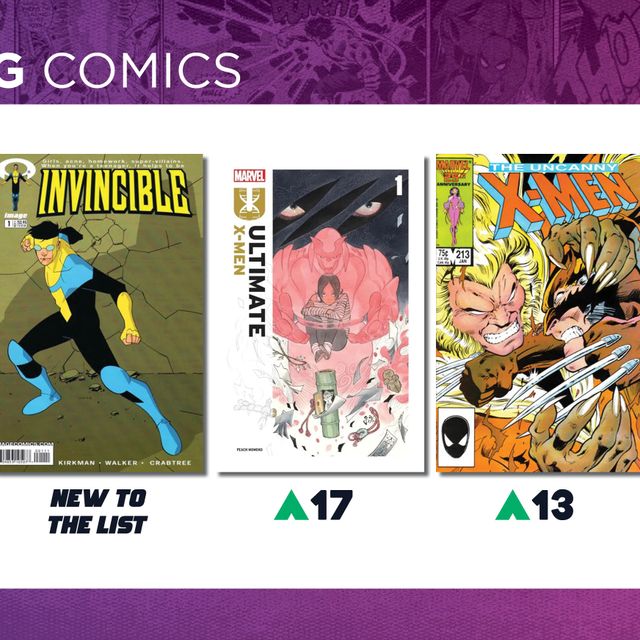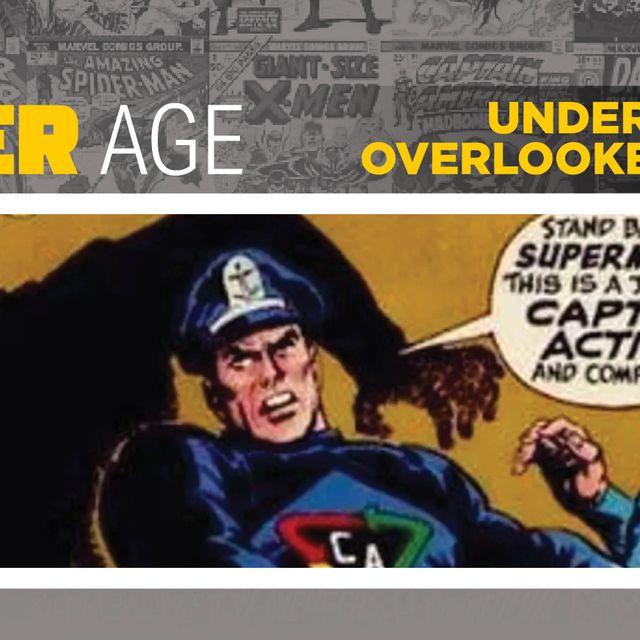![]()
If you’ve been collecting comics for even a brief period of time you’ve no doubt heard the term “key”. For example: “Giant Size X-Men #1 is a major key” or “Incredible Hulk #181 is the most important Bronze Age key comic”, etc.
Maybe you’ve heard this term used for the first time on this very blog. Comic collectors and speculators alike love to throw it around. A key comic can be defined as “an important issue in a comic book title's run.” (see here).
In this post, I want to focus on the importance of so-called 'key issues' and ask the question: what makes one key comic different or better and more essential than another?
Surprisingly the answer to this question is not so intuitive.
For example, a particular issue of a comic series which first introduces or kills off an important character is certainly a key. However, a comic featuring the origin story of an important character, or simply the place where a pivotal plot change occurs for a character or group, can sometimes be considered a more important key.
Is one type better than the other?
Should the ‘better’ keys command more money?
To put things into sharper focus let’s start by making distinctions.


Minor versus Major Keys
We can start with the distinction between minor and major keys. What is a minor key and how is it different from a major one? Let’s look at the category of minor key first. Comics fitting this description can include individual issues that feature things like a costume change for a superhero character or the first artwork from a celebrated artist (comics are a visual medium so artwork can make or break a comic's key status).
A good example of a minor key, using the above guidelines, would be the first comic art drawn by Neal Adams. This appears in interior panels in Archie's Joke Book Magazine #48 (August 1960) [note: even though it was published after other art drawn by Adams, it features his earliest drawn panels for American comics]. In high grade condition, say certified 9.8, you might still be able to pick up this Archie comic for around $100.00. You can find it in mid-grade for between circa $15.00 - $30.00 raw. Compare that to iconic Adams’ artwork from his prime: Batman #251(Sept. 1973) .
Adams’ Joker cover on this issue practically defined the modern look for the clown prince of crime. This comic re-introduces the classic Joker, taking the character back to his psychopathic Golden Age days and sending the Silver Age version packing. Not surprisingly this is the more significant key with a current FMV of $5, 500.00 in 9.8 grade [55 times more expensive than AJB #48].


Sleeper versus Sought out Keys
Now we can turn to sleeper versus highly sought out keys. Obviously, the sought out keys are the ones that everybody wants and they frequently command significantly more money than key issues that are not as well known or hyped.
A sleeper key that still surprises me in terms of the low prices on high grade copies is X-Men #132 (April 1980). This comic features the first full appearance of the Hellfire club with Donald Pierce introduced as the White Knight, which means that it’s the first full modern appearance of that group. This comic also reveals Jason Wyngarde to be Mastermind, who was manipulating Jean Grey’s thoughts. It’s the first appearance of Tessa, later known as the Mutant Sage; and it also features much hommaged and iconic John Byrne artwork for Wolverine on the last panel. Here Wolvie is shown ready to take on the entire Hellfire Club solo. In my opinion this is a sleeper key that should be better known. However, when it comes to the Phoenix keys, basically all attention gets focused on only two books: X-Men #101 and X-Men #134.
Let’s compare the prices on X-Men #132 with X-Men #134 (June 1980). Why is XM #134 the more significant key? It features the first appearance of Dark Phoenix and is a seminal moment in the Phoenix saga’s plot. Is this significant, yes, without a doubt! But why does this single attribute push X-Men #134 to price levels more than three times those of issue #132?
X-Men #132 has a current FMV of $260.00 in 9.8 certified grade. X-Men #134 is currently valued at $900.00 in the same grade. This brings us to the difference between merely acknowledged or recognized versus what are deemed 'essential' keys.


Acknowledged versus Essential Keys
Here’s the crux of the matter. Not all keys are the same. The basic desirability of a recognized key can increase to levels that it becomes an ‘essential’ or a ‘must have’ key book. Unfortunately this is the most difficult part of key hunting (a mode of collecting that has come to dominate the hobby). It can be extremely difficult to know why certain characters first appearances or significant plot lines, are more valued and deemed more essential than other characters or stories.
Why is Amazing Spider-man #129 (Jan. 1974) worth so much more than Amazing Spider-man #138 (November 1974)?
Because the Punisher is, simply put, more popular than the Mindworm.
No amount of wishing will make the first Mindworm (current FMV in 9.8 = $350.00) ever overtake the first appearance of Frank Castle (current FMV in 9.8 = $14,000.00). Currently ASM #129 is worth a staggering 40 times the value of ASM #138. Unless a complete change in fan attitudes towards the Punisher and Mindworm occurs (which is unlikely), most people will say that ASM #129 is an 'essential Spider-man key issue', while ASM #138 will merely be cited as the first appearance of a minor villain. The interesting question is, if you removed the Punisher, would ASM #129 (with only the first appearance of the Jackal) be worth a similar amount as ASM #138? The answer is: likely yes.
The take away here is that key comics are important not only for the significant features of their covers or stories, but even more for the value placed on how desirable they are to collectors. Here’s the important point and the lesson of this aspect of collecting.
A comic deemed a major or essential key is not always fixed in stone and books that today are deemed significant keys can later fall by the wayside or be replaced by other key books. But non-keys are rarely bound to spike in price at the same levels.
This is the strength of hunting down and collecting key issues: they tend to have stronger returns and are also more desirable than non-keys for most collectors. That said, it takes a fair amount of research to discover potential or significant keys and what one person or generation deems a major key might not be considered essential by other collectors. The way I see it, this is just another part of the allure and fun that comic collecting can bring.


